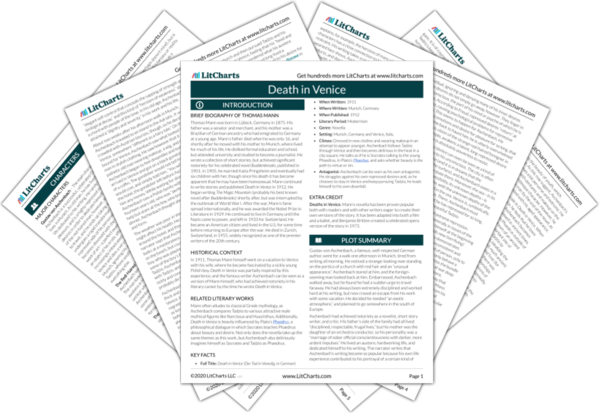The Disease Quotes in Death in Venice
That was Venice, the obsequious and untrustworthy beauty—this city, half fairy tale, half tourist trap, in whose reeking atmosphere art had once extravagantly luxuriated, and which had inspired composers with music that gently rock you and meretriciously lulls you to rest. The adventurer felt as if his eyes were drinking in this luxuriance, as if his ears were being wooed by these melodies; he also recollected that the city was sick and was disguising the fact so it could go on making money; and he was more unbridled as he watched for the gondola that glided ahead of him.
For several years, Indian cholera had shown an increasing tendency to spread abroad and travel. Engendered in the hot swamps of the Ganges delta, arising from the mephitic exhalations of that wilderness of primordial world and islands, luxuriant but uninhabitable and shunned by man, in whose bamboo thickets the tiger crouches, the epidemic had raged throughout Hindustan unremittingly and with unusual violence, had spread eastward to China, westward to Afghanistan and Persia, and, following the main caravan routes, had brought its horrors as far as Astrakhan and even Moscow. But while Europe trembled in fear lest the phantom might enter its territory from that point, and by land, it had been carried across the sea by Syrian merchants, had appeared in several Mediterranean ports simultaneously, had raised its head in Toulon and Malaga, had shown its mask repeatedly in Palermo and Naples, and seemed to be a permanent fixture throughout Calabria and Apulia. The north of the peninsula had been spared. But in the middle of May of this year the fearful vibrios had been discovered in Venice twice in the same day, in the emaciated, blackened corpses of a cargo-ship crewman and a female greengrocer. . . . In fact, it seemed as if the epidemic had experienced a revivification of its strength, as if the tenacity and fertility of the germs that caused it had redoubled.

















